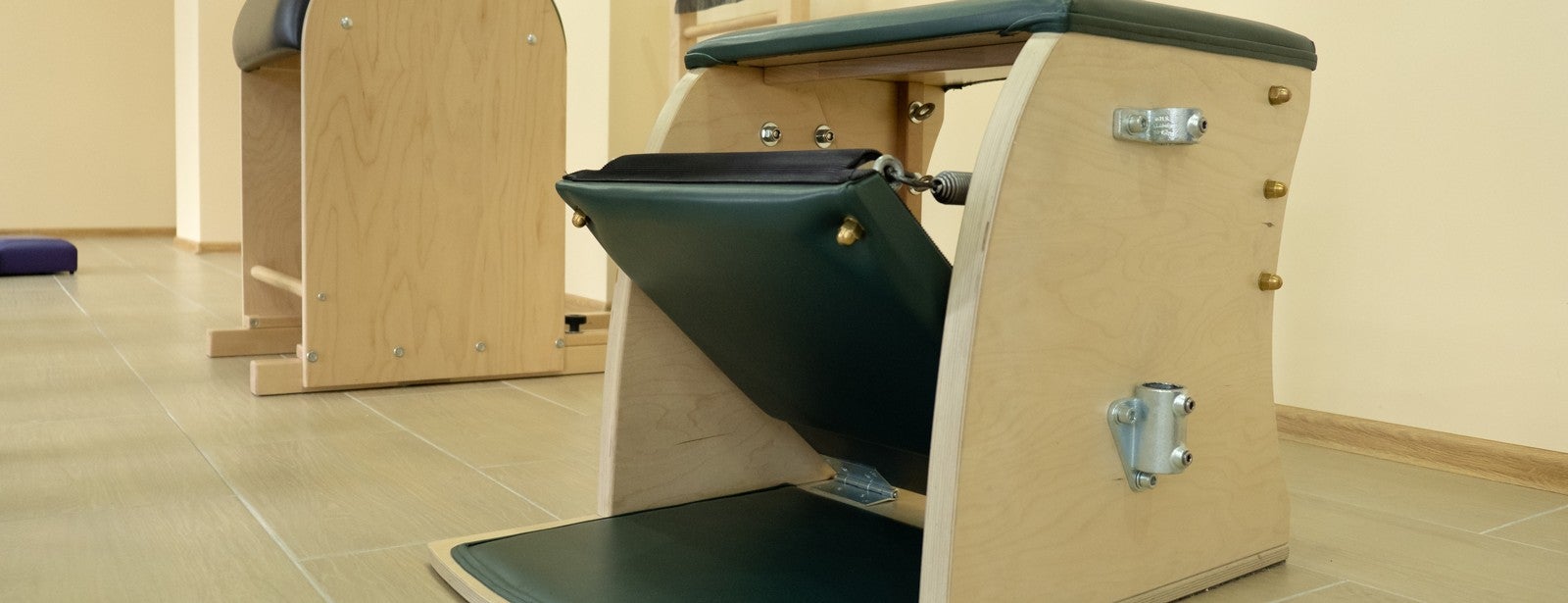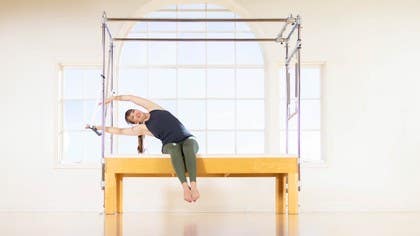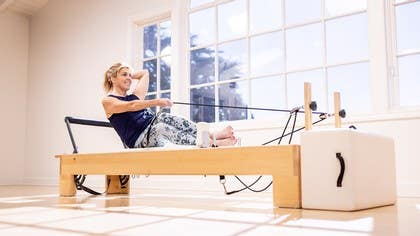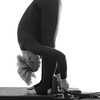
What's so Wundaful about the Wunda Chair?
The Wunda Chair is an apparatus designed by Joseph Pilates, the man behind the exercise system that bears his name and the inventor of the famous Pilates Reformer. Resembling a backless chair, the Wunda Chair consists of a wooden base topped by a padded seat that doubles as the world’s smallest exercise Mat. Beneath the seat, there’s a pedal that goes up and down, attached to springs on either side offering strong, medium, or low resistance. Wunda Chair exercises are performed sitting upright on the padded surface as well as standing atop, behind, or in front of the chair with hands or feet in contact with the pedal. While the Wunda Chair is less well known than its studio counterparts including the Reformer, the Tower, and the Cadillac, its compact size combined with its versatility makes it worth seeking out.
What's So Wundaful About the Wunda Chair for Pilates?
Joseph Pilates originally designed the Wunda Chair for his well-heeled New York City studio clients to bring to their summer houses. Portable and with a small footprint, the archival models could be flipped over to become an armchair that would not have been out of place in a mid-century living room. Later versions of the chair added a split-pedal offering more resistance options. Detachable handles on the sides can be used for balance in the standing exercises (as seen in another piece of studio apparatus, the High Chair). Then as now, the Wunda Chair offers a challenging, varied workout in a small amount of space. The limited spring settings mean you can get an efficient, full-body workout in a short time without a lot of stopping for complicated equipment changes.
What makes the Wunda Chair exercises so challenging?
The Wunda Chair is a challenge because, in all of the repertoire, there is only a small part of the body that is connected to the Chair. For example, while Footwork on the Chair resembles the choreography of Footwork on the Reformer (extending and bending the knees), on the Chair the back of the body is not supported as it is on the Reformer. This means less stability and more of a balance challenge. In addition, some of the repertoire is performed with one foot on top of the Wunda Chair and one foot on the floor or kneeling on top of the Wunda Chair, which challenges body awareness and balance. These exercises are best attempted by practitioners who have good body awareness and feel comfortable with similarly challenging exercises on the Reformer. In addition to falls, hazards to watch out for on the Wunda Chair include pinched fingers or toes if they get in the way of the heavy pedal. The best way to avoid these potential pitfalls is to work with an experienced teacher and to familiarize yourself with the mechanics of the chair before attempting the exercises.
Can anyone use the Wunda Chair?
Don’t let the moving parts scare you off. The Wunda Chair is appropriate for people recovering from injuries or those who have limitations. Some models feature a split-pedal design, offering more versatility and making them especially useful for rehabilitation or athletic training. Moving the split pedal with one hand or one foot safely challenges and targets the injured or weaker side, and you can perform extra reps on that side as well. The Wunda Chair is also a game-changer for pregnant women. Many of the exercises carry over from the Reformer, the difference being that they are performed in a seated or standing position rather than supine, which is contraindicated after the second trimester. These seated or standing exercises (using handles for balance) are appropriate at all stages of pregnancy and also feel wonderful.
What makes it different from other pieces of apparatus?
Joseph Pilates intended his system to work holistically, with each piece of apparatus complementing the others. Just as working on Mat exercises improves your ability on the Reformer, working on the Wunda Chair will up your Reformer game. The same skills you need to get the most out of the Reformer (i.e. centering, balance, concentration, and moving from the powerhouse) can be attained with practice on the Wunda Chair. The same spinal shapes recur and reappear as well - tall, rounded, side-bending, and rotated. A thoughtful teacher might even prompt you to think about a related exercise during your session, asking you to “find your Elephant” (from the Reformer) in the Pull Up on the Wunda Chair. The connections between the exercises, even across apparatuses, are there if you look for them. And the more skilled you become at finding these echoes or patterns, the more you’ll begin to squeeze the juice out of each exercise.
What is the difference between the High Chair and the Wunda Chair?
The Wunda Chair isn't the only chair in the studio. There’s also the “High Chair” (sometimes called the “Electric Chair” by fans of gallows humor). The High Chair shares some repertoire with the Wunda Chair, but it has a tall back like an old-fashioned armchair that provides an additional point of contact for the back body. Two handles attached to the sides assist with balance in the standing exercises that are performed facing the Chair. Like the Wunda Chair, the High Chair is appropriate for pregnant practitioners as well as people recovering from injuries (under the guidance of a seasoned teacher or physical therapist). With a repertoire of basic seated footwork as well as more challenging exercises that involve rising off the floor while standing on the pedal, the High Chair is a versatile apparatus that challenges body awareness, balance, and core strength.
So the next time you’re in the Pilates studio, have a seat. Your body will thank you.
Comments
You need to be a subscriber to post a comment.
Please Log In or Create an Account to start your free trial.














